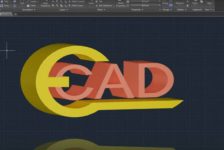In the previous post, I wrote about what a portfolio is and listed some audiences you may be trying to impress with it. The portfolio itself is not the whole picture, though.
Regardless of whether you favor an online format or hard-copy portfolio, you will need additional items. Every one of the things mentioned here needs to contain your name and contact information. When viewed together, they are cohesive, and seen individually, they must be able to hold their own. Consider the following list as elements of a marketing system that includes your fabulous new portfolio.
- Cover letter: A cover letter accompanies all marketing material that is sent out, period. In an email, what you say in the body of the email may stand in for the cover letter, or you can attach a separate file for this. I won’t get into cover letter writing here, but think about how it will work and look with your other materials.
- Mail-ahead: In requesting an interview, you may choose to send a brochure, resume, and/or samples of work. Snail mailed or emailed, it must concisely represent your abilities. A business card serves about the same purpose with prospective clients, but may also be combined with other literature.
- Resume: They used to be just words on paper for pretty much everybody. Over the last 20 years or so, resumes from many creative fields have evolved to be visual, blending information with images. Having said that, it is also wise to maintain a separate text-only resume just in case. A text-only resume must be clear enough to read after having been faxed.
- Portfolio: How you would present yours in an interview? Consider whether you would be best represented with a hard copy portfolio, digital portfolio, or both (more on this in future posts). The portfolio should contain more work than the rest of the marketing system elements. If they’ve asked to meet and see your portfolio, show them additional work!
- Leave-behind: After presenting your portfolio (in person or not) this piece can help your interviewer remember who you were. I’m not accusing your audience of short-term memory problems, but with so much competition, a little reminder can’t hurt. Try highlighting accomplishments or memorable images in this piece. It can be anything from an email to a booklet. Feel free to hand your interviewer this item in person at the end of the interview or send it afterwards. A leave-behind could also be used as a follow-up piece, demonstrating that you are really interested.
- Thank you letter: of course you thanked your interviewer for their time, but don’t forget to send a thank you note. People like to be appreciated, and this also serves the purpose of reminding your audience about you. Send one to every person who interviewed you, and please don’t address it “to whom it may concern”. Failure to send a thank you (no matter what happened in the meeting) says a lot about you, so do not neglect to do it!
- Packaging: If you choose to do everything digitally, their computer serves as your packaging. Sending hard copy materials, though, is a different animal. Take a good look at your own mail; you know junk mail when you see it, and you recognize your utility bills without having to pay too much attention. What makes your mailed correspondence stand-out in their mail? Consider whether a hand-written address would mean something different to you than a type-written one, and if so, does your audience likely feel the same? How about if the color of the envelope corresponded to the contents (or not)? Is the paper smooth or rough, glossy or matte, and what does this contribute to the presentation?
- Writing: Blog posts, published articles, your cover letter, resume, practically this whole list counts. In addition to your other tremendous abilities, employers (and clients) want to know that you can communicate both verbally and in writing. They need the assurance that emails from you will be clear and professional. In addition to your grammatical skill, they will learn if you are a positive person or a total downer, if you’ll be considerate or rude. Do you sound like someone they would want to work with? Think about this in conjunction with the next two:
- Online profiles: Everything that is publicly visible is fair game. LinkedIn, Land8, Facebook, etc. Let’s say that you will be applying for your dream job. What will your interviewer find if they Google you? Have your posts in forums been helpful or grumpy? Is your profile public, or is everything private? How much can this person learn about you that you would want them to know? IF they look you up, it is part of your marketing system, like it or not.
- YOU! Last, but most importantly is who you are. Nobody can design marketing materials that represent you better than you can. Letters of recommendation and references will speak to the kind of person you are to work with, but you can’t craft what others will say. As professionals, we must behave like the people we present ourselves as or none of the above matters.
Next time, I will write about some portfolio formats with respect to their pros and cons. As before, please feel free to send me your ideas, opinions, and stories!
Published in Blog







